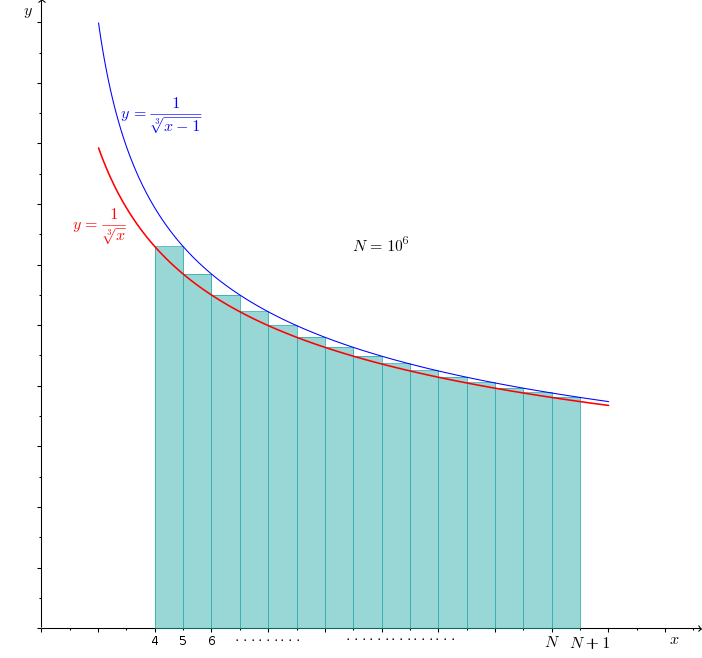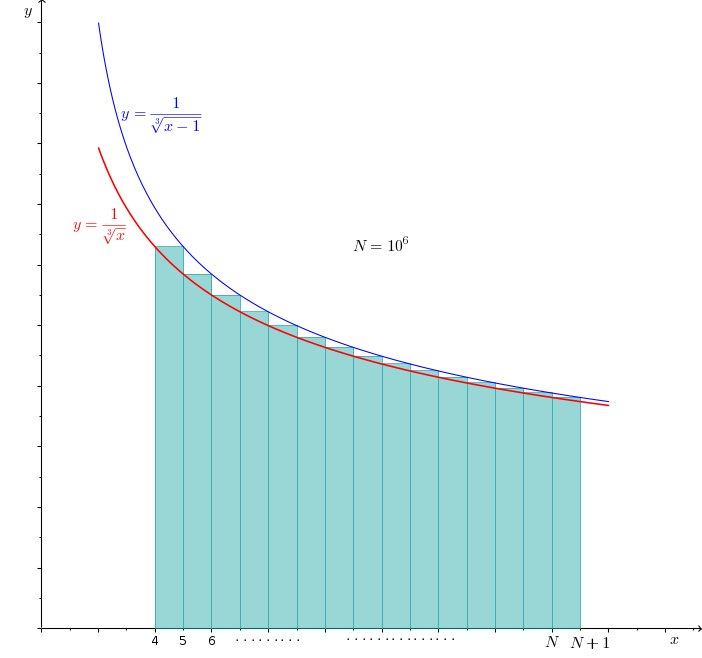Let N = 106. Then the given sum
Consider the function
We notice that each term of the given sum are simply f(4), f(5), . . ., f(N). Geometrically, we can interpret S as the sum of the areas of rectangles having its height as f(4), f(5), ... while the width is 1 for all of them. This has been shown by the greenish shaded portion in the following diagram:
You can easily see that S is bounded by the areas
from above and by
from below. Hence
14996.2 < S < 14996.9
Therefore, [S]= 14996
 Sushovan Halder awesome solution sir.i got it.Thanks sir.
Sushovan Halder awesome solution sir.i got it.Thanks sir.
